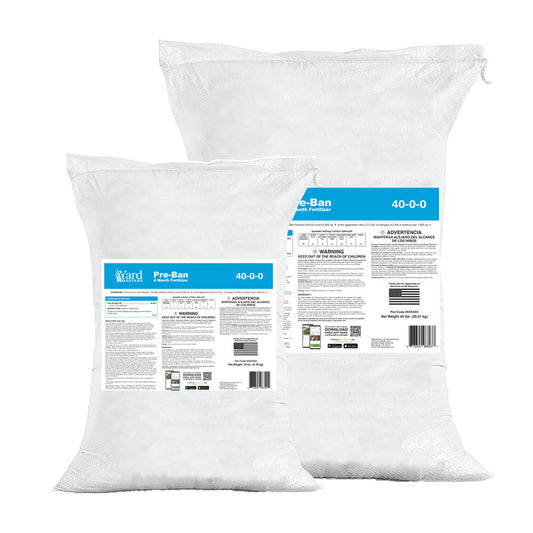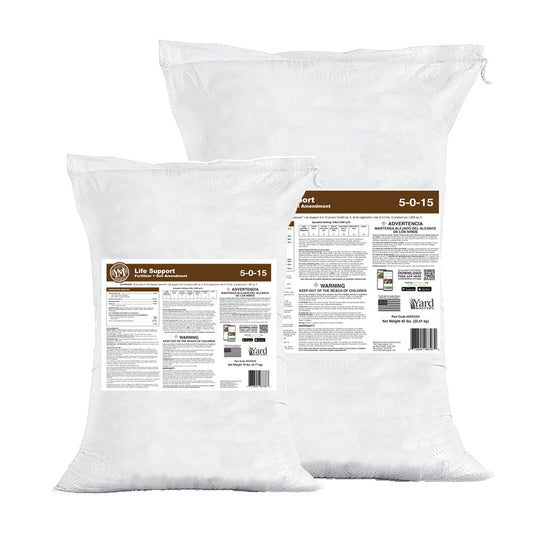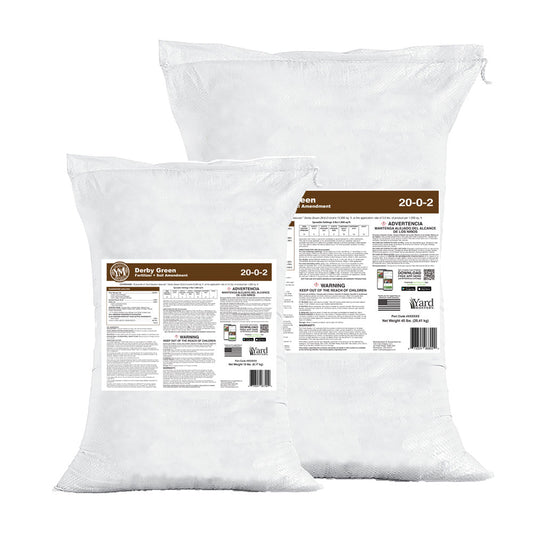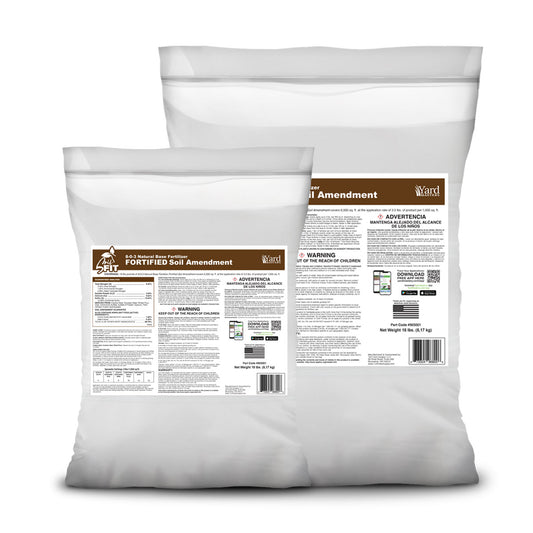Hey there Lawn Care Nuts, how is your October going? I have been super busy, living that Lawn Care Nut life.
Last week I was privileged to visit the Milwaukee Metropolitan Sewerage District (MMSD) and take a tour of the plant where our favorite fertilizer, Milorganite is made!
I know that some of you are hoping I’m going to drop some dad jokes on you about contributing directly to the success - which I will here soon - but I’m really more looking forward to sharing with you what I learned about the process overall.
That video is coming out later this week so be sure to subscribe!
But one thing I will say right away is that the folks who work for Milorganite and the folks out at Jones Island: they are really passionate about what they do, and why they do it. I’m hoping my video can convey that.

This post isn’t about Milo though, but if you want a cool camo cap, get on the waiting list here - it’s more just about me answering some questions that I’ve been getting this week from both Cool Season and Warm Season Folks across the country. Here we go:
Mowing - What should I be doing here in the Fall time?
Cool season folks all the way down into the transition zones, keep mowing!
The more you mow, the healthier it will grow, I promise. This is also important because leaves are falling and you want to stay on top of them! Don’t let them pile up.
Especially if you seeded, you are already undoubtedly getting gray skies and if you allow leaves to shade things you are truly smothering your new turf. Either way, even if you have mature turf, please keep mowing and allow the last precious days of sunlight to leak through!
Here is a video I did a few years ago where I show you what leaf cover looks like when it’s TOO HEAVY to mulch and needs to be raked/bagged, which is another question I get a lot! Grass Daddy also did a video on this, check it out here.
As far as mowing height, feel free to start bringing things down a little. I recommend you mowing turf-type tall fescue up around 4” during the summer and early fall, and Kentucky Bluegrass and ryegrass about the same.
But now it’s cool if you want to bump that down a notch or two. Just do it over a couple mowings. Ending up the year at 3” or even 2.75” is perfectly fine. This will help reduce the chances of snow mold over the winter.
Keep mowing as long as the grass isn’t stiff and frozen. Wait until morning frost wanes before enjoying your final few mows. Also, remember, snow cover is good during the winter.
Something to think about: as you begin noticing that you are mowing less frequently, notice how the grass is still very green?
That is because photosynthesis and carbohydrate production is still going strong but the energy is NOT being put into top growth. Instead, it’s being put into root production and winter storage.
Warm Season Folks:
Mowing for you varies by grass type and location. I’ll assume most of you don’t get snow cover and in fact, your ground won’t freeze. This means you may have to keep mowing, even if your lawn goes dormant, to keep winter weeds from getting carried away. If leaves blow onto the lawn, those need to be cleaned up as well!
St Augustinegrass:
I’ll start with you as you are easy. Keep your height at 4” all year and never go lower. That’s it. Let it fall asleep as needed. If you are somewhere below the frost line, your St Augustine (or other grass type) never goes dormant.
Bermudagrass:
This one gets a lot of debate, especially amongst the cool kids that have reel mowers. But for the majority of you who mow with a regular lawn mower like I do, keep your Bermuda lawn similar heigh all year long.
If you mow your Bermuda at 2-3” during the season, you should keep it within that range until and throughout winter as well. Reason being is I am always concerned about winter winds that can cause desiccation in the plant. You can scalp in the spring when soil temps start getting up over 60 again. For now, let it go to bed a little long.
Zoysia and Centipede:
You are similar in that I’d rather you just keep mowing where you are until the grass goes to sleep. Unless you are also one of those Zoysia cool kids, just keep your HOC (height of cut) the same all the way until winter.
Winterizers (Cool Season Folks):
Cool Season Lawns: This is another one we need to talk about because everyone loves that term, “Winterizer.” Truth be told, you want to give the lawn a nice shot of Nitrogen sometime right around the time it slows to a crawl in the top growth.
By now you’ve been mowing your lawn long enough that you have to be able to “read the signs.” Certain trees like the ash, which tend to turn color and drop leaves earlier in fall, are completely done and the later fall colors are starting to wain.
It’s right around this time that you can really feel the winter setting in. Gray skies may be blocking the sun and the lawn just doesn’t stand up as tall as it did just a few weeks earlier - but it’s still green and probably will stay that way even through winter!
Warm Season Lawns you are similar but in most cases, your lawns are going to turn brown in winter. Our grass types are just that way.
For both of you, this is the time for your winterizer application, but don’t think you have to run out and buy something that reads “winterizer.” Instead, I’ve found something super cheap and awesome!
The topic of a winterizer is something we have not really talked about much and I think it’s time for an introduction.
Know first that nitrogen is volatile and easily lost. That’s why when we look at soil tests, I almost never talk about what I see with Nitrogen levels because it’s very likely to change if we have a long, sunny dry period or on the flip side, a heavy thunder (with lots of lightning) storm.
One thing that slows the loss of nitrogen is the lowering of temperatures both in the soil and in the air. The cooler it gets, the more nitrogen remains in the soil for plant uptake.
When we apply a winterizer, we want to apply it literally at the last minute! That last minute being just as the grass stops putting energy into top growth. At this point, we get some root uptake and storage for winter.
This is the time to inject your winterizer and because it’s close to complete dormancy for most of you, we need that nitrogen to release quickly! If you want to mess with 21-0-0 ammonium sulfate, feel free to have some fun!
But if you want my recommendation on a good winterizer fertilizer this season that is readily available and easy to apply, I think the best deal out there is currently found at Walmart. It’s a 10-10-10 product (actually made by a division of Scott’s) called “Expert Gardener.”
It’s got fast release (water soluble) nitrogen that is great for a winterizer. it’s got some phos and potassium too but those are just there for fun. I’m recommending this product because it’s only $7 per 40 lb bag at the physical Walmart store. Call your local Walmart and see if they have some in stock! This is a great buy and a fertilizer you can use in spring as well.
For your winterizer, put this down at 5lbs/1000 sq ft. This will give you 1/2lb Nitrogen. Be sure to get it watered in and you’re good! A this price, I have rarely seen a better value, so Throw’er Down!
I’ve also seen this product in a 16-16-16 for the same price, but in a 20lb bag. If you find this one, feel free to throw down at 3lbs/1000 which will also bring 1/2lb Nitrogen. And once again, water it in!
Want to help that winterizer work even better while driving down some final roots in your cool or warm season lawn? Hit it with a cocktail of 3 oz/1000 RGS and 3 oz/1000 Humic12. Water it in, all good for the long dirt nap to come.
What About Spraying Weeds?
Cool Season Folks: Here is a picture of our project lawn. Jake and I completed our second application there last weekend and I’ll be publishing a video here this weekend showing you what we did. You can see Jake’s update here.

Either way, what you will notice is that we have a ton of weeds there.
Everyone wants to know what we are going to do and the answer is: nothing now. We are only a few weeks away from the first freeze of the year there in NW Indiana and that is going to kill 80% of the weeds and the other 20% will also go into dormancy. There is no need to spray a bunch of chemicals all the time. Just look at how nice that turf is looking!
We will take care of the weeds in the spring starting with strategic use of Pre-Emergent herbicides. For now, we need to keep it mowed and clear of leaves. I even recommended the homeowner stop watering for a bit. There is plenty of rain in the fall in this area, and temps are down into the low 60s.
Warm Season Folks: Again, assuming you live somewhere where the ground doesn’t freeze, you may still get a few weeds invading. My first advice to you is to get ready to hand pull! Again, why use chems if you don’t have to? I often laugh when people send me a picture of one single weed in their lawn with a title of “how do I kill this?” Your thumb and index finger are the best weed killers there are, use them!

However, the further south you get, your lawn may go dormant, but the weeds may still rage. Spotted Spurge and it’s step-brother Garden Spurge are raging here now in Florida.
If these are in landscape beds or in your driveway and sidewalk cracks, sweep the leg and use a torch to keep them under control. Getting outside in winter to burn some crack weeds will do you good!
And if the problem is bad enough in the lawn, spot spraying with Dismiss will work fine. It’s good at lower temps (not below 55 though) and the price has really come down over time, making it a very economical choice for warm season lawns (Bermuda, Zoysia, St Augustine, Centipede and Bahia too). But really, don’t go too crazy here, back it down and consider hand pulling!
If you are looking for a FULL SEASON LAWN GUIDE that tells you exactly what to put down and how much, get it here for cool-season lawns and warm season lawns.
I call these “guides” because they are always changing. First off, I am always learning and I take what I learn and I use that knowledge to update the books, yearly.
Everyone who has purchased the book (it’s an E-book) will get new versions free, as they come out. I’m already rewriting them for 2019 but if you want to see what the plan looks like as it sits today, feel free to start reading now, you have nothing to lose as the update gets emailed automatically in late February 2019.
Secondly, I call them “guides” because I’m really trying to teach you more than dictate to you. Sure, it’s cool if you follow the guide perfectly for the first season, but after that, my hope is that you have learned enough to start flexing things all on your own.
If your lawn can stay the same double dark color with half the amount of MILO, then that is going to save you money. But you’ll never know if you don’t take the knowledge and flex it for your own situation. What I’m saying is “consider backing things down in year 2.”
All that said: in 2019 I’ll be ADDING to the e-book to include second and third year guides/plans for you to work from as well (no extra charge, all included). Since the audience is progressing, I want to to keep the guides updated along with you.
So next year’s plan will have a minimum of 3 plans inside, not just the one. Sales pitch over. :)
I'll see YOU in the lawn!
AL








